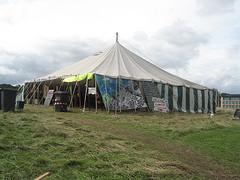To send the former-leper to the priests, for the ritual of the Law, was only one form to say they: – ' ' They listen! Here I am I am making what vocs they cannot and they do not want to make, there inside! ' '. The Law did not tax no honor, to the Priest. But it standed out the religious caducity where they were dived! But it showed that what the Law was impossible, it was here for carrying through! But it showed that the true leprosy was the religiosidade of them, the cultural superstitions of them. that of now in ahead they, the religious ones of Israel were new the Geazis. What, by the way, today it does not have lacked in the religious ways, the ones that if enaltecem with the leprosy of its headings, and with that the ones that possess some heading, of which enaltecem happen its prestgios. ' ' It honors to who has honor! ' ' Jesus honored the leper! ' ' I want! If clean! ' ' We go to reflect a little regarding this. How many they are excluded today, in our days! The exclusion has one strong trend. The dominant ones, the detainers of headings, make of its headings? whip of God? , and they decide punishment, of that they erram of that they fall of that they fight against the nature fallen human being, but are not covered with? I want? , of the conjunct, of the intersection of the devotion, the understanding, the love, the longanimidade, the unrestricted expression of the love that takes in them until the cross for the other, in the place of the other.
He is much more easy, to exclude, to tarjar of rebel, pecador, what to support, to build, to exortar, to help, to support, to help, to support He is much more easy if to omit hiding itself in the legalist procedures, of what if to compromise to the life, much more easy to make speeches, of what to extend the hand and to act. It reads this message again and the mentioned texts. Our enemy greater is the ignorance of the intention of God, for we, Ef.3; 10. Abraos. Jose Carlos Flower.
 The vegetation tambmserve to reduce precipitation incidence in the ground and modifies aconcentrao of the humidity in the atmosphere and the adjacent surface. It possesss ambient muitasfunes, being able to be used in the architecture, civil engineering, the climatic control, the control of the temperature and the umedecimento of air. 3. URBAN CLIMATE EARQUITETURA IZARD & GUYOT (1980) abordamas climatic questions in the context of the bioclimtica architecture. They question comose can provide, to the occupants of the buildings that if construct currently, comfortable ambientesinteriores spending the minimum of energy, if not using maisque the disposals purely architectural. To answer the essequestionamento, are boarded aspects related with the climate, quaisse between them detach the more excellent climatic elements: the temperature of daily air and seuregime, the humidity of air and its daily regimen, the speed and the devento sector and its daily regimen, and the intensity of the direct and diffuse solar radiation, in daily regimen. KONYA (1981) relates, as the elements climticosprincipais for human well-being and the drawing of buildings, to radiaosolar, the temperature, the humidity, the wind, the precipitations and factors special, as the seismic movements, storms of dust, etc.
The vegetation tambmserve to reduce precipitation incidence in the ground and modifies aconcentrao of the humidity in the atmosphere and the adjacent surface. It possesss ambient muitasfunes, being able to be used in the architecture, civil engineering, the climatic control, the control of the temperature and the umedecimento of air. 3. URBAN CLIMATE EARQUITETURA IZARD & GUYOT (1980) abordamas climatic questions in the context of the bioclimtica architecture. They question comose can provide, to the occupants of the buildings that if construct currently, comfortable ambientesinteriores spending the minimum of energy, if not using maisque the disposals purely architectural. To answer the essequestionamento, are boarded aspects related with the climate, quaisse between them detach the more excellent climatic elements: the temperature of daily air and seuregime, the humidity of air and its daily regimen, the speed and the devento sector and its daily regimen, and the intensity of the direct and diffuse solar radiation, in daily regimen. KONYA (1981) relates, as the elements climticosprincipais for human well-being and the drawing of buildings, to radiaosolar, the temperature, the humidity, the wind, the precipitations and factors special, as the seismic movements, storms of dust, etc.